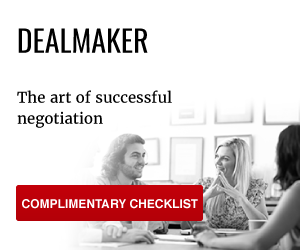 In science fiction, first contact with an alien species is scary. It’s the same thing with first contact with new buyers: the cold call often gets the cold shoulder and that carefully-crafted email ends up in the spam-me-later folder. So how do you turn ‘Alien’ into ‘Close Encounters’? Here are twelve insights from the team at Templar Advisors.
In science fiction, first contact with an alien species is scary. It’s the same thing with first contact with new buyers: the cold call often gets the cold shoulder and that carefully-crafted email ends up in the spam-me-later folder. So how do you turn ‘Alien’ into ‘Close Encounters’? Here are twelve insights from the team at Templar Advisors.
1. Make contact like a human being. Ideally start with an introduction but, failing that, make sure your first call or email is personal. Try Mike Southron’s Sales on a Beermat introduction email template (works well for calls too). Avoid spammy, impersonal approaches: don’t give people a reason to ignore you from the start.
2. Have a referral. New buyers will be more receptive if you come recommended from someone they know and trust. Research shows that you’re 50 percent more likely to close with a referral compared to a 25-30 percent closing rate for cold or inbound requests. So be sure to make the most of your network and check for connections.
3. Make it all about them. Yes, you want to sell something. But the person you’re speaking to doesn’t care about your targets and origination goals. Instead, you need to understand what motivates them, what their needs are and how you can help them make progress. Being solutions-led and not product-led is how to build a relationship. So talk to them about their problems in their language, not your products in your language.
4. Listen twice, speak once. ‘The biggest communication problem is we do not listen to understand. We listen to reply,’ says Stephen Covey. You don’t learn anything when you are speaking so sharpen your listening skills. Whether you talk fast or slow, smart questions are more effective than long speeches. The best questions to ask new buyers are brief and help them to unpick the challenges that they face. Don’t waste too much time asking questions about context.
5. Give and get. Reciprocity is a social convention; people tend to return good deeds. As Professor Robert Cialdini explains in Influence: The Pyschology of Persuasion (and in this video), you can use this fact to engage people. For example, you can send prospective clients reports, white papers and other useful information and you can build this kind of reciprocity into your digital marketing. Give something valuable to get someone’s attention.
6. Use social proof. Even if the person you’re talking to hasn’t heard of you, you can reassure them with social proof: do you have well-known clients, expert testimonials, great references or press coverage? All this creates a halo effect that can get you a more receptive audience.
7. Become a trusted advisor. When you ask new buyers to take on a new supplier and/or a new service, you’re asking them to take a risk. Trust is essential for reducing that perceived risk. To become a trusted advisor, you need to show that you understand their goals and that you can help achieve them.
8. Take the buyer on a journey. Trust is earned over time. But there are some things you can do early on. Challenge the status quo to help the buyer see their world in a new way. Work with them to explore and reframe the art of the possible. Educate them about new tools, technologies and strategies. Show them you have something to offer.
9. Teach them how to buy from you. Remember that a prospective client might not often buy your product or service. In some cases they might never have bought from an organisation like yours before. It’s important, therefore, that you work alongside them as a collaborator and partner to take them through the steps necessary to make the solution work for them.
10. Use stories. Humans are wired to respond to stories. Whether it’s a formal customer case study or a way of explaining what you do, have a few stories up your sleeve. You can use phrases like ‘we helped a client solve a problem like that by…’ or ‘we often see client achieve goals like yours by…’ to great effect.
11. Always be helping. HubSpot, a marketing software firm, has declared that ‘Always be closing is dead’. Instead, you should focus on ‘Always Be Helping’. Hard selling doesn’t work because, ‘the balance of power has been tipped away from the sales rep and toward the buyer. With the transparency and availability of information online, and the ability to tap into third-party reviews, buyers are far savvier than they used to be.’
12. Be self-aware. Know your strengths and weaknesses when it comes to sales and don’t be afraid to ask for help where you find a weak spot. Sales is very much a skill, not a talent: that means it includes tried-and-tested techniques that you can learn and which you must practice if you want to make the most of them.
